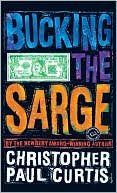
Downey, Lynn. 2004. MOST LOVED MONSTER. Ill. by Jack E. Davis. New York: Dial Books. ISBN 0803727283 [Suggested Grade Levels K-3]
REVIEW
Monster Mama just finished reading a bedtime story and it is time for her “little fiends” Max, Mattie, Mervin, and Mella to go to bed. But, as Mama tucks in each little monster, each one wants to know who she loves the most. Mama’s diplomatic reply to each one is “I love all my little monsters. But you—you are very special.” She then tells each little one what make him or her special. For example, Mattie is very well-mannered because she “[shares] her spit” and “[screams] out in school.” Each little monster goes to bed snug and happy. Early the next morning, the little monsters decide to surprise Mama by showing her how much they love her.
This classic story of the strong bonds that exist between mother and children is rather unique because of the unusual characters and their equally unusual traits. At times the story borders on being disgusting, but it never quite crosses that line. For example, Mervin bakes a “roachberry upside-down cake with mud-covered slugs on top.” Outrageous descriptions such as this one together with richly detailed and vivid illustrations make this book appealing to young readers. The warm colors Davis uses are a perfect match for the theme of this story. Rather than being scary, these monsters are irresistible (e. g. After Mama describes the different ways that Mattie displays her manners, Mattie’s reply is “I am polite, aren’t I?”). This witty, cleverly written story is bound to leave a smile on the reader’s face long after the last page is turned.
CONNECTIONS
Invite children to discuss those traits that make their mothers special. They can then create a Mother’s Day card describing (through illustrations or words) those unique qualities.
Children can identify the various insects found in the illustrations throughout the book. They can create a variant form of the game “Concentration” by pairing the name of each insect with its picture or drawing.
RELATED BOOKS
Other stories about lovable monsters:
Hindley, Judy. THE PERFECT LITTLE MONSTER. ISBN 0763609021
Leuck, Laura. MY MONSTER MAMA LOVES ME SO. ISBN 0060088605
By S. Zulema Silva Bewley




